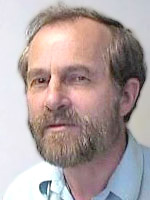Recent News
NQVL Design Phase Award
October 1, 2025
CHTM Joins NSF's NQVL Pilot Projects
August 9, 2024
OSE PHD, Dr. Xuefeng Li - Wins The Outstanding Interdisciplinary Graduate Programs Award
May 10, 2024
Dr. Ali Rastegari - 2024 OSE Best Dissertation Award Winner
May 10, 2024
News Archives
International team's work will enable better understanding of optical transmitters
June 29, 2016 - Sharon Steely

Marek Osiñski
Five researchers on an international team have developed a new method of extracting information on the spectral broadening factor of laser diodes. The discovery was performed at the University of Paris-Saclay by Frédéric Grillot, Lecturer at Télécom ParisTech and Research Professor with The University of New Mexico's (UNM) Center for High Technology Materials (CHTM); Cheng Wang, Assistant Professor at Shanghai Tech and doctoral student at Télécom ParisTech; with the support of Marek Osiñski, Professor with UNM Electrical and Computer Engineering and CHTM; Kevin Schires with Telecom ParisTech; and Philip Poole with the National Research Council of Canada (NRC).
Their paper, "Thermally insensitive determination of the linewidth broadening factor in nanostructured semiconductor lasers using optical injection locking," has been published in the journal Scientific Reports, published by Nature Publishing Group, found online here: http://www.nature.com/articles/srep27825.

Frédéric Grillot
This work will enable a better understanding of the optical transmitters used in high-speed communications networks.
Laser diodes, invented in 1962, are now widely used as they generate the optical pulses carrying information in fiber optic networks. Fiber optic networks transmit large volumes of data over vast distances at very high speeds. Laser diodes are distinguished from other lasers by high frequency changes corresponding to a given power variation. The linear coupling between the changes of the effective refractive index and the modal gain is described by the linewidth broadening factor, which is responsible for many static and dynamic features of semiconductor lasers. Intensive efforts have been made to characterize this factor in the past three decades. Accurate knowledge of this fundamental parameter is needed to optimize the performance of millions of laser diodes inserted in the global communications network.
The paper proposes a simple, flexible technique for measuring the linewidth broadening factor of semiconductor lasers. This new technique has great advantages of insensitivity to thermal effects, the bias current, and the choice of injection-locked mode. In addition, it does not require the explicit knowledge of optical injection conditions, including the injection strength and the frequency detuning. The standard deviation of the measurements is less than 15%.
Related:
http://www.nature.com/articles/srep27825
http://www.telecom-paristech.fr/actualites/informations-pour-la-presse/photonique.html


